Earthquake Fault Lines in the United States: Where Is Your Home at Risk?
-
Pete Ortiz
- Last updated:
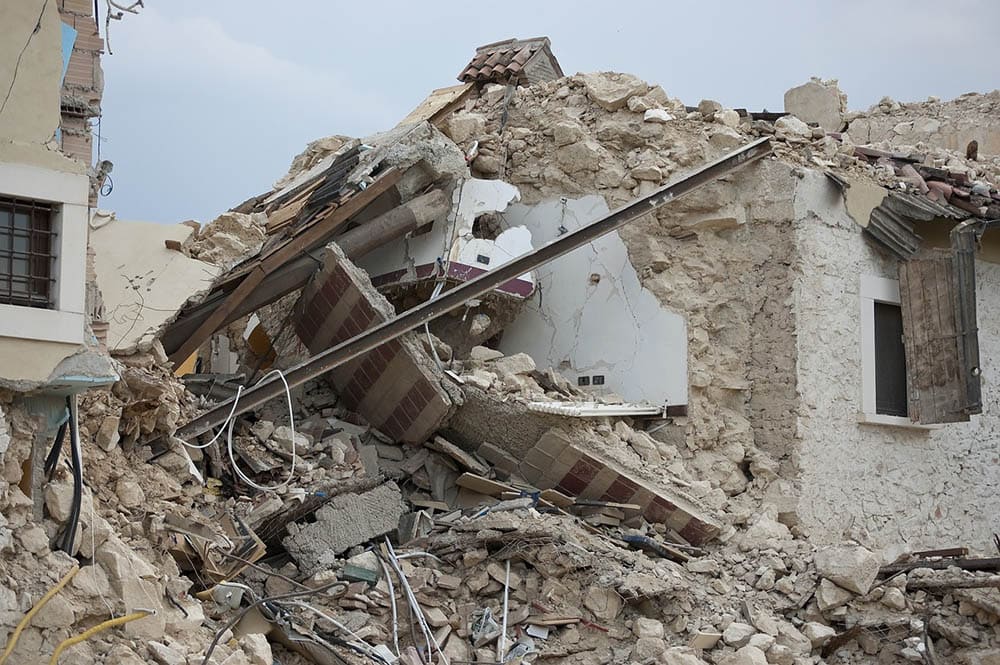
Although most of us associate earthquakes with states like California, the truth is that every state in the country has experienced some type of ground shaking over the years. Earthquakes happen when the surface of the earth experiences movement or shaking, most commonly along faults or fractures between the rocks of the Earth’s crust.
Knowing the location of any fault lines in your area can help you determine the amount of risk to your home, although there are several other factors involved, which we’ll discuss. We’ll also look more closely at specific regions of the United States and the earthquake hazard risks in each one.
Factors That Help Determine Earthquake Risk
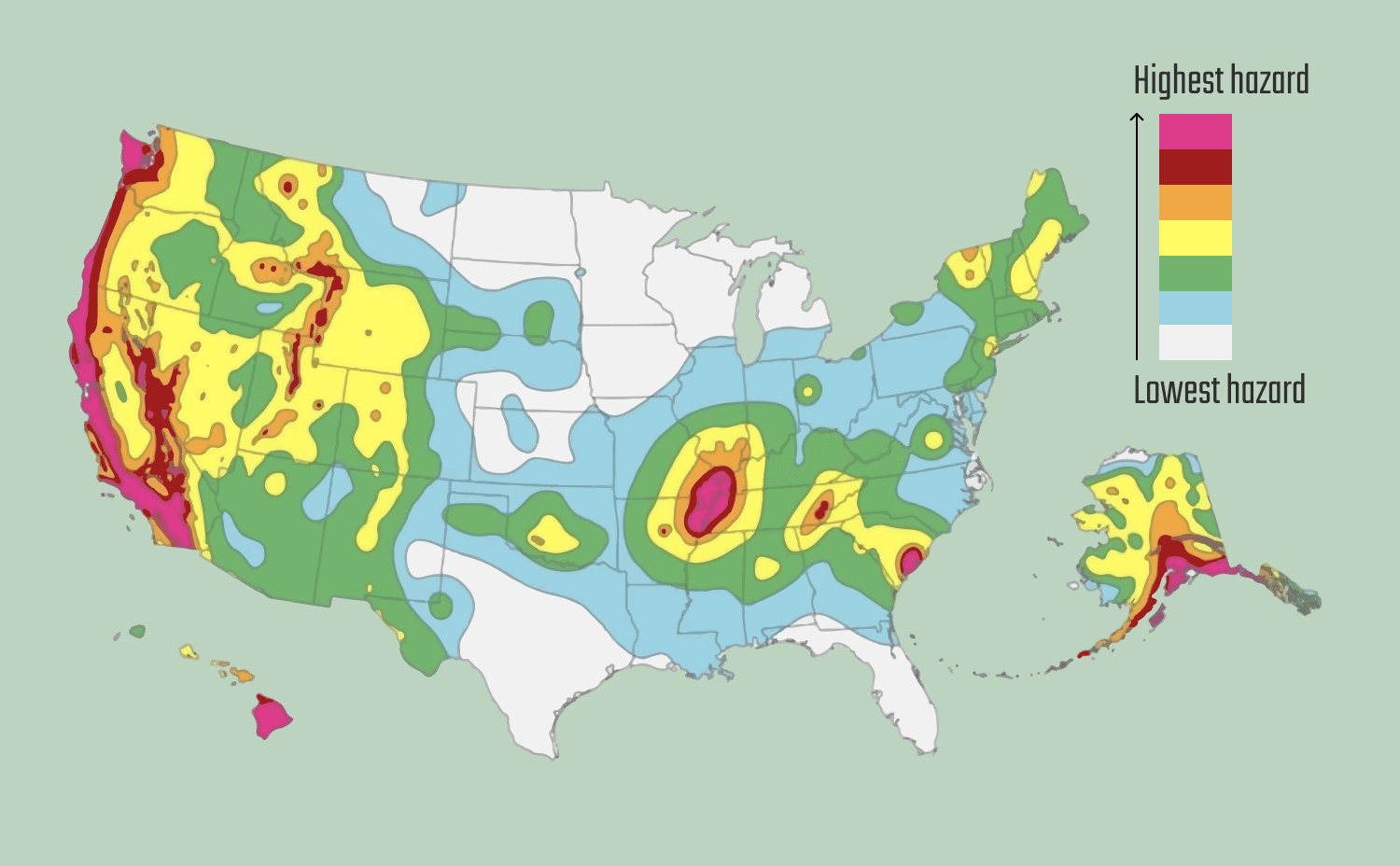
According to the Federal Emergency Management Agency (FEMA), three factors go into calculating earthquake risk for a region.
These factors are:
- The presence of earthquake hazards (faults, etc.)
- The number of people and property near the hazards
- How vulnerable people and property are to the hazards (building codes, etc.)
The agency also notes that soil quality plays a major role in determining risk, as poor soil conditions increase the amount of ground shaking felt during an earthquake. A previous strong earthquake in an area also increases the risk of future tremors.
Earthquake risk to individual houses is determined by a combination of geological and structural factors including what the house is made of, what type of ground it’s built on, the height and design of the building, and whether the house is on a slope.
Earthquake Hazards In The Eastern United States
In the Eastern United States, the most dangerous area for earthquakes is a location called the New Madrid Seismic Zone.
New Madrid Seismic Zone
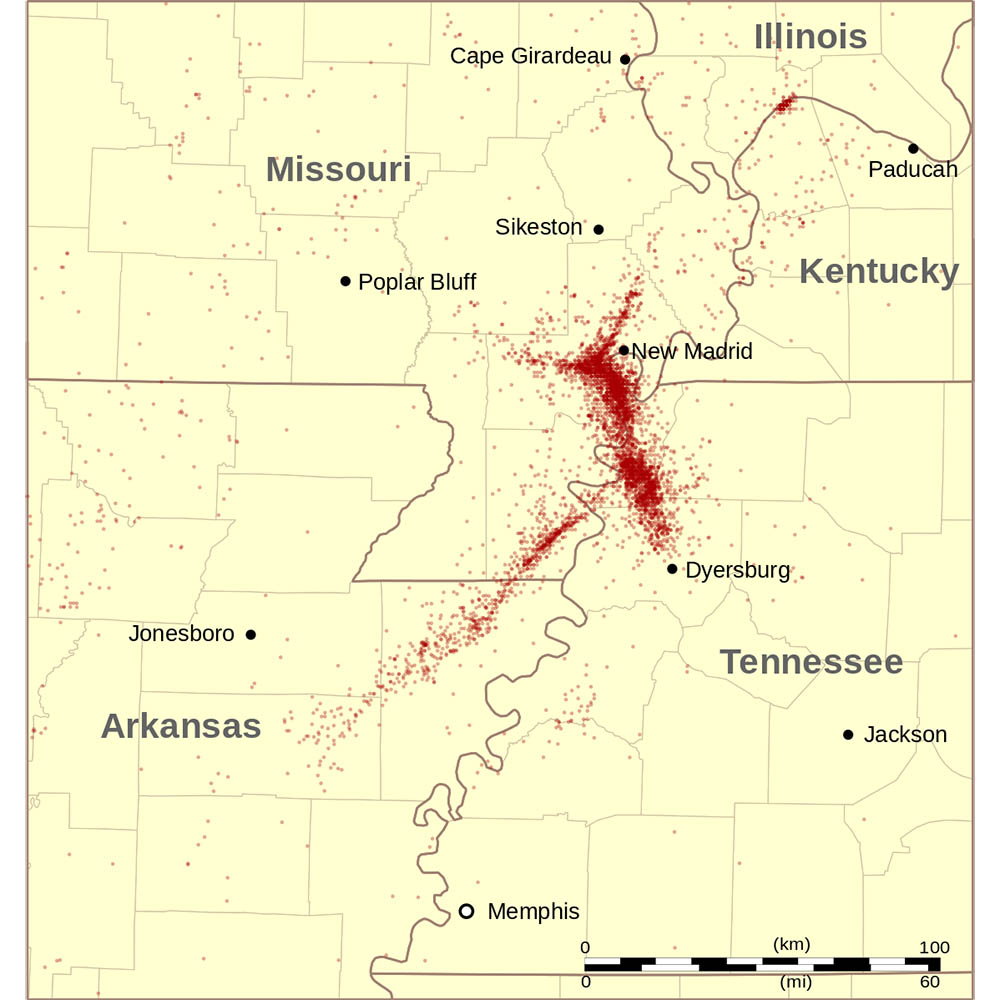
Until 2014, this area experienced the most earthquake activity in the lower 48 states and still does if man-made activity is excluded. Thousands of earthquakes have been recorded in this region since 1974. Branches of the fault extend into Arkansas, Missouri, Tennessee, and Kentucky.
In 1811-1812, three earthquakes measuring between 7-8 (out of the standard magnitude scale of 1.0-10.0) in magnitude originated from this fault. Tremors from these quakes were felt as far away as Connecticut and caused damage as far north as Ohio.
Based on geologic evidence, scientists believe an earthquake of this magnitude occurs about every 500 years in New Madrid. They calculate a 7%-10% chance of such an earthquake happening in the next 50 years. Just as concerning, the chance of a 6.0 magnitude earthquake, which is still hugely destructive, is at 25-40%.
Homes in the states bordered by New Madrid are most at risk from these earthquakes. In Kentucky, many homes are built on poor soil, increasing their risk. In addition, the soil cover in the Midwest allows earthquake tremors to travel farther at a higher magnitude.
A strong earthquake in New Madrid could theoretically cause damage as far north as Wisconsin and Minnesota. Another nearby fault area, the Wabash Valley, borders Illinois, Kentucky, and Indiana. Activity from New Madrid could potentially activate this fault, increasing the risk area.
Charleston, South Carolina
The strongest recorded earthquake along the East Coast happened in Charleston, South Carolina in 1886. The 7.6 magnitude tremor was felt over 2.5 million square miles and caused damage as far away as 200 miles.
This history of a strong quake, plus the continued presence of regular earthquake activity in the state, indicates this area is at an elevated hazard for a future powerful shock. Surrounding states could also suffer damage, including Georgia, North Carolina, Virginia, and Maryland.
Other Areas of Concern
In northern New York State, the St. Lawrence River valley has experienced previous earthquakes and is at risk of doing so again. Earthquakes in this region threaten not only New York state, but parts of Eastern Canada, including major cities like Ottawa.
Eastern Massachusetts experienced a strong (6.2) earthquake in 1755, with shaking felt in other northeastern states such as Connecticut and Rhode Island. The state has recorded over 400 other earthquakes since 1668.
Tennessee is threatened from both sides of the state, with the Eastern Tennessee Seismic Zone looming. An earthquake in this area would also impact nearby states like Kentucky and North Carolina.
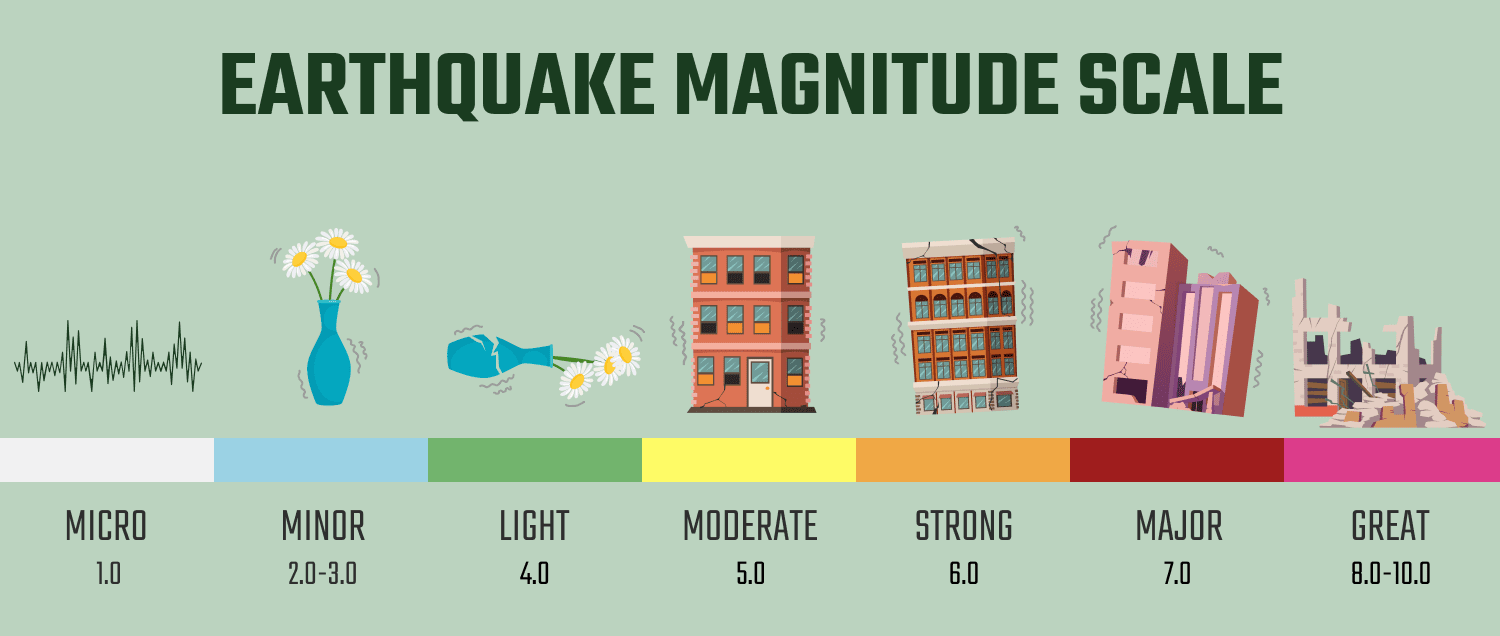
Earthquake Hazards In The Western United States
The western United States contains several areas where your home would be more at risk from earthquakes. It also includes some areas placed at risk due to “induced” or man-made earthquake activity.
Induced Earthquake Activity
Starting in 2009, the rate of earthquakes in Oklahoma increased drastically, to the point that the number of 3.0 or higher tremors in the state surpassed that of California from 2014-2017. Most of these earthquakes are man-made, caused by a by-product of the oil and gas industry known as wastewater injection.
Other states also experience risk from induced earthquakes, including Wyoming and parts of Texas.
Rocky Mountain Basin
The Rocky Mountain region, which includes eight states, contains numerous areas where homes are at elevated earthquake risk. Not only does the region contain countless active faults, but many major population centers are located alongside those fractures.
For example, Utah contains a long fault called the Wasatch Front. Over 80% of the state’s population lives within 15 miles of the fault, while 75% of the state’s economy is also based there. In geologic time, scientists believe the fault is due to produce a powerful earthquake soon, placing millions of people at risk.
The Wasatch is part of an extended area of seismic activity called the Intermountain Seismic Belt that stretches from Montana down into Nevada. The entire area experiences earthquake activity, much of which occurs near cities, putting homes at risk. Nevada contains so many faults that every resident lives within a few miles of one.
The West Coast
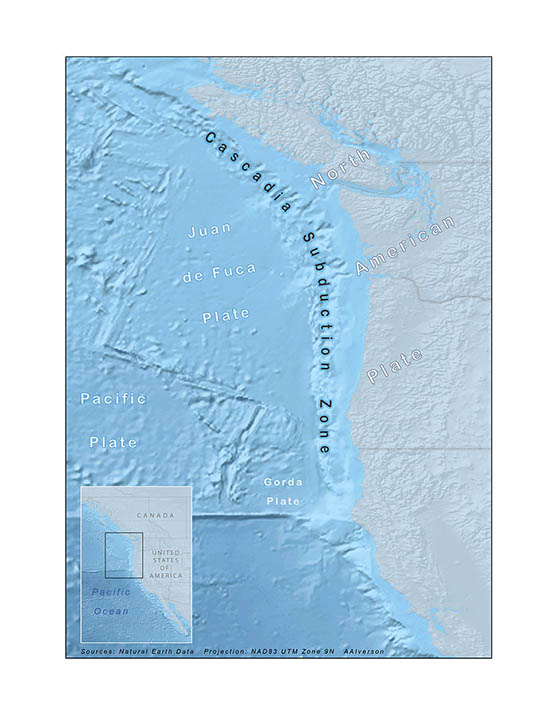
California is the state most closely associated with earthquakes (although it is not the state that experiences the most earthquakes each year). However, California does have the most earthquakes that cause damage, because the state is heavily populated, and active faults run under the states’ largest cities, San Francisco and Los Angeles
Washington and Oregon lie in the Cascadia Subduction Zone, a fault that runs from Northern California to Vancouver. This fault experienced a massive, 9.0 magnitude earthquake over 300 years ago, and pressure has been building over the centuries.
Scientists believe a devastating earthquake could occur at any time in this region, with a 37% chance of it happening in the next 50 years. Major cities in both states are at risk, especially the Seattle area, which has other faults lying beneath it. Buildings and construction are largely unprepared for this shock, placing many homes at risk.
Alaska
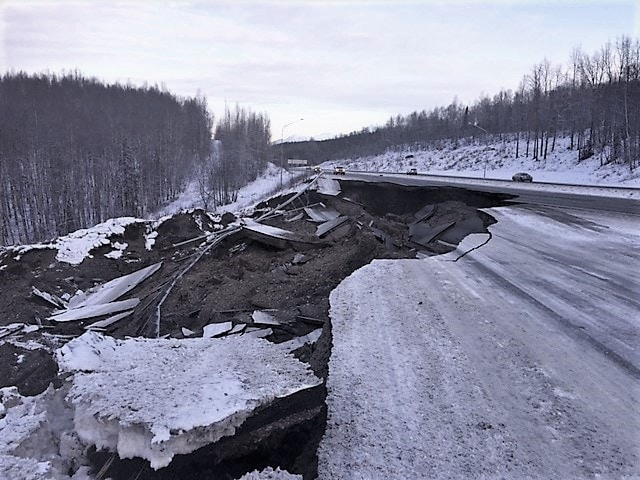
Alaska experiences the most earthquakes per year in the United States by a wide margin. The state records an average of 1,000 earthquakes per month. Alaska’s faults and hazard regions are mainly in the southern and central parts of the state, which is also where most of
the population lives.
Because the state suffers so many strong earthquakes, the risk to homes and people is high, even though progress has been made preparing buildings to withstand shaking.
- You may also be interested in: 14 Facts About Earthquakes – Statistics and Data
Hawaii
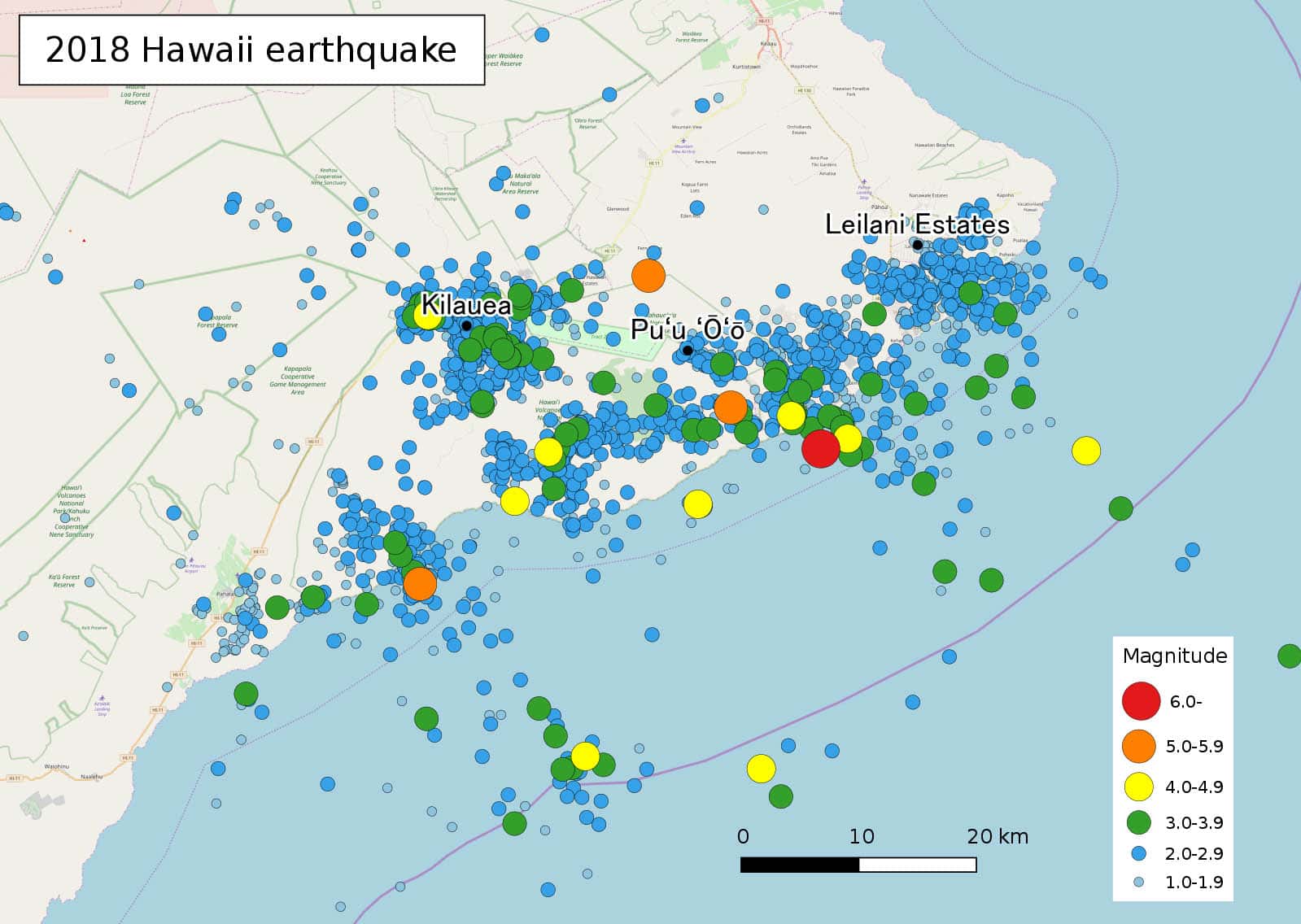
Much of the earthquake activity in Hawaii is related to volcanic eruptions, which is why the areas at highest risk are on the Big Island, where the Mauna Loa and Kilauea volcanoes are located. Recently updated models show a 90% chance of Hawaii Island and Maui experiencing damaging earthquake activity in the next 100 years.
The heavily populated island of Oahu has a 50% chance of such activity. Other islands in the state could experience shaking, but it is less likely. Many homes in Hawaii lie in areas of high risk for earthquake damage.
How To Protect Your Home From Earthquake Damage
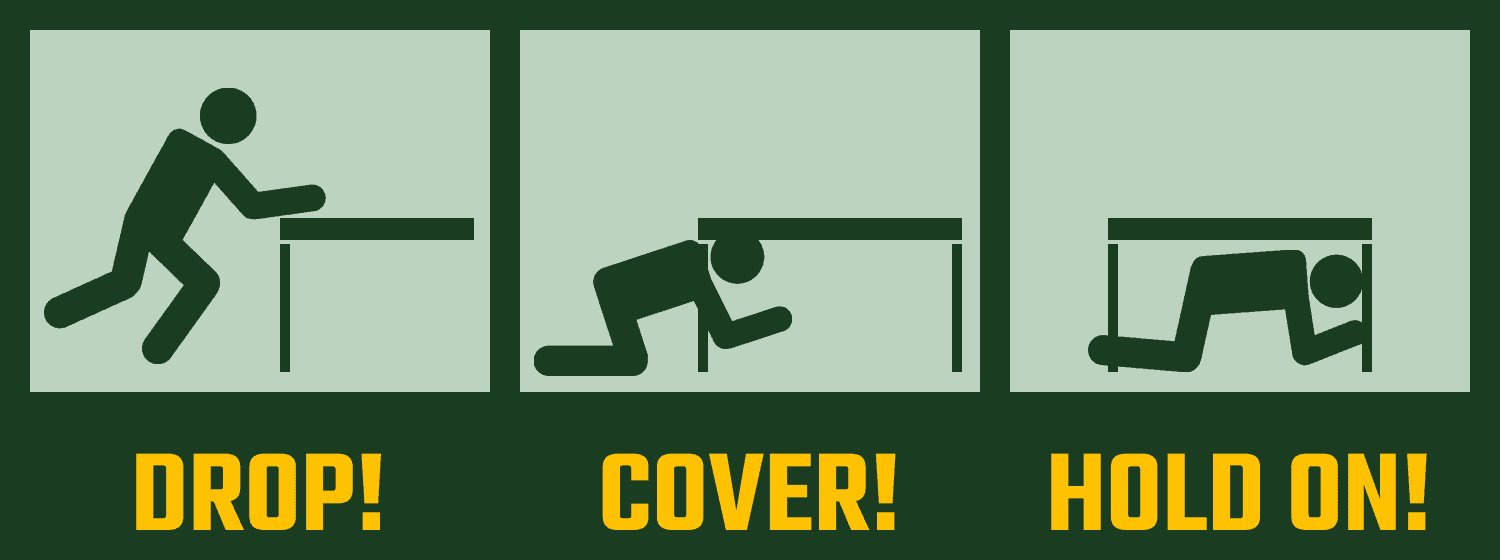
Because earthquakes cannot be predicted with certainty, early preparation is key to the best outcome. The USGS and FEMA are constantly working to update data to provide states and cities with the best recommendations for building codes and structural safety, as well as helping to identify older buildings that need to upgrading.
Depending on where you live, look into making earthquake updates to your home. Other steps you can take to prepare your home for an earthquake include:
- Anchoring lights, heavy furniture, and appliances
- Bracing suspended ceilings
- Always keeping at least two exits clear
- Latching cabinets
- Purchasing earthquake insurance
If a significant earthquake event occurs, these simple precautions can help keep you safe and minimize damage to your home.
Final Thoughts
With so many areas of the United States at risk for earthquakes, it’s easy to feel worried or intimidated. The best thing you can do is be prepared, and part of that includes determining whether you live in an area of increased earthquake hazard, which you’ve hopefully learned by reading this article. Learn what you need to do to protect yourself during an earthquake and prepare emergency supplies and an emergency plan. These simple steps can help you feel as empowered as you can be when facing the prospect of living through an earthquake.
Featured Image Credit: Angelo_Giordano, Pixabay
Contents



